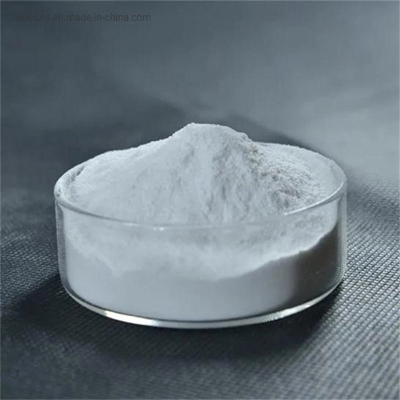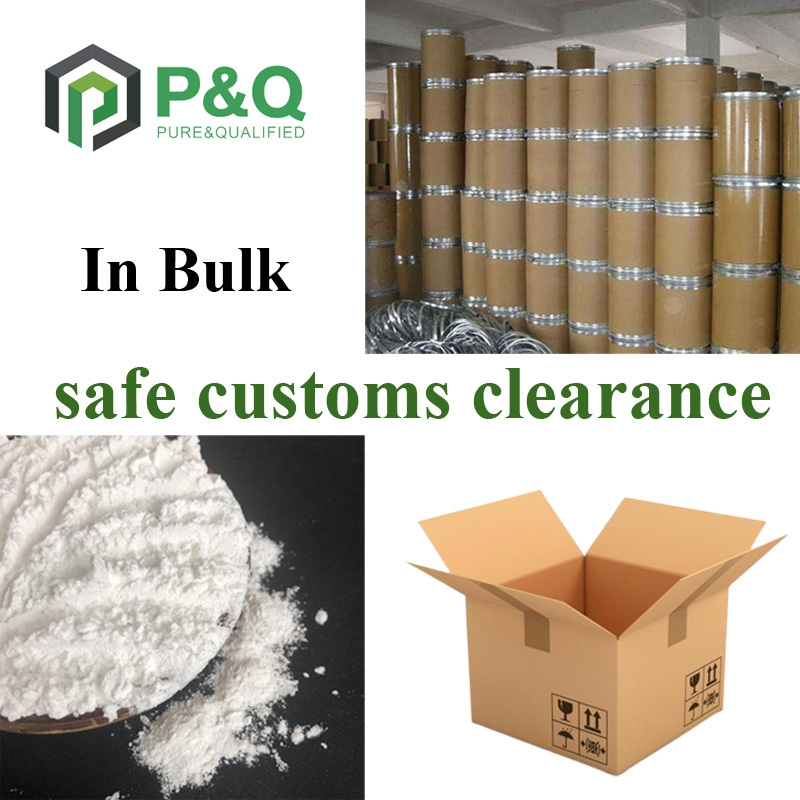Antioxidants of natural drugs
-
Last Update: 2020-04-03
-
Source: Internet
-
Author: User
Search more information of high quality chemicals, good prices and reliable suppliers, visit
www.echemi.com
2013-06-04 classification: efficacy 0 people commented that flavonoids, phenols, terpenes, polysaccharides, vitamins and trace elements selenium in natural medicinal plants have strong antioxidant activities, and many natural antioxidant substances have strong anti-cancer activities Flavonoids are a large group of compounds widely existing in nature, most of which have color Most of them combine with sugar to form glycosides, and a few of them exist in free form Its basic structure is a series of compounds formed by two benzene rings connected with each other through the central three carbon chain, as shown in Figure 1 According to the oxidation degree of the intermediate three carbon chain, the position of benzene ring (2-1 or 3-1) and whether the three carbon chain forms a ring, the important natural flavonoids can be divided into 14 categories, including flavonoids, isoflavones, flavonols, flavane-3-alcohols, etc Among them, flavonols are the most common, accounting for about 1 / 3 of the total, followed by flavonols accounting for more than 1 / 4 of the total, the rest are relatively rare [Fig 1] the structural formula of flavonoid compounds is not only widely distributed, but also diverse in biological activities Such as inhibiting specific key enzymes, regulating the release of neurotransmitters and so on, it can reduce blood lipid, cholesterol, protect liver, anti-inflammatory and estrogen like effects Especially in recent years, flavonoids have been widely concerned in anti-virus (such as HIV, influenza virus, etc.) and reversing multidrug resistance of tumor cells Fig 1 flavonoids are phenolic acid compounds In the presence of some metal ions, their structures are easily oxidized by the basic structural formula, so they have strong antioxidant activity and can protect the unsaturated fatty acids on the cell membrane from oxidation Flavonoids capture free radicals, reduce the biological activity of their harm to the body, and antioxidation are the most research fields of flavonoids activity, and many flavonoids have much higher antioxidant activity than vitamin C, and the toxicity is very low Xu Qing et al 1 studied the anti hepatitis B virus effect of TFL in litchi The results showed that TFL could inhibit hepatitis B virus, and had obvious anti-inflammatory and liver protecting effects Ginkgo biloba and its leaves are rich in Ginkgo flavone Ginkgo biloba leaves can be extracted by ethanol (the content of flavone can be up to 1%), and products with extraction rate of more than 1.5% can be obtained, and the content of flavone can be up to 25% The order of free radical scavenging activity of flavonoids mixture was: myricetin > quercetin > rhamnetin > Morin > Diosmin glycoside complex > naringin complex > apigenin > catechin Silymarin is a flavonoid lignan compound, which is extracted from the seed coat of silymarin, a medicinal plant of Compositae It is yellow powder and bitter taste It has the functions of protecting liver, improving liver function, promoting bile secretion and anti-inflammatory As a strong antioxidant, it can remove free radicals in human body and delay aging Silymarin can effectively reduce Fe2 + / VC by preventing or inhibiting lipid peroxidation The concentration of malondialdehyde (MDA), a lipid peroxidation product in mice liver microsomes, may reduce the MDA content and photochemical reaction in acute alcoholism Liu Jie observed the effect of flavonoids on the autooxidation of fatty acids The results showed that the factors affecting the antioxidant efficiency of flavonoids were not only the concentration of flavonoids, the unsaturation of fatty acids, but also the number of phenolic hydroxyl groups in B ring When the number of phenolic hydroxyl groups is small, the scavenging efficiency of active oxygen is obviously reduced For example, the scavenging efficiency of myricetin (hexahydroxyketone) to hydroxyl free radicals (· on) is 50%, while that of naiflavin (trihydroxyketone) is only 20% According to Fang Yunzhong, flavonoids can be introduced into electron donor groups, so they can generate stable free radicals They can prevent or inhibit lipid peroxidation, protect biomacromolecules from oxidative damage, and reduce cell differentiation rate At the same time, flavonoids can also inhibit the activity of benzopyrene hydroxylase, so that benzopyrene can not be converted into final carcinogens Flavonoid has a wide range of biological effects Its antitumor activity and mechanism are to improve the activity of antioxidant enzymes, eliminate free radicals, eliminate carcinogenic effect of carcinogens, induce tumor cell cycle arrest, promote tumor cell apoptosis, and affect the activity of some enzymes, such as protein kinase in signal transduction pathway, metabolizing enzymes of carcinogens, nucleic acid topoisomerase II, etc At the same time, by inhibiting the expression of P-glycoprotein and heat shock protein 70 (HSP70), we can improve the sensitivity of tumor cells to chemotherapy drugs The phenolic hydroxyl group on the benzene ring is an antioxidant active group, which can eliminate free radicals, inhibit oxidation reaction and free radical reaction, and combine with biomembrane phospholipid to protect membrane lipids and other mechanisms to resist the damage of free radicals to tissues Schisandra chinensis contains many kinds of schisandrin and schisandrin It is a kind of wood lipid mixture It has significant antioxidant activity, and its activity is stronger than vitamin E The antioxidant components of Schisandra chinensis play their antioxidant roles from the following aspects: ① scavenging superoxide anion free radicals; ② antagonizing the peroxide effect of hydrogen peroxide; ③ inducing the activity of superoxide dismutase and catalase Ferulic acid is contained in Angelica and Ligusticum chuanxiong The phenolic hydroxyl group on the benzene ring is an antioxidant group Ferulic acid can directly reduce the content of H2O2 Chlorogenic acid in Eucommia ulmoides leaves and honeysuckle can react with oxygen free radicals rapidly, which shows scavenging activity to 2,2-diphenyl-1-bitter hydrazine (DPPH) free radicals There are terpenoid saponins in ginseng, acanthopanax senticosus, cohosh and astragalus, and steroidal saponins in Ophiopogon japonicus, digitalis and Codonopsis pilosula, which can inhibit the formation of free radicals The saponins with antioxidant activity include total saponins of Panax notoginseng, Panax quinquefolium, Panax japonicus, Gynostemma pentaphyllum, saikosaponin, etc The triterpenoid drug glycyrrhetinic acid has a significant inhibitory effect on the lipid peroxidation caused by carbon tetrachloride, and the atractylone extracted from the root of Atractylodes macrocephala has the same effect as glycyrrhetinic acid Their antioxidant effect is mainly to protect the liver cell membrane from oxidative damage, so as to preserve the integrity of cell membrane structure and avoid the diffusion of Cl 3O2 · toxic substance - aldehyde group on the membrane In vitro experiments show that the aldehyde group of one molecule can block one SH in one enzyme molecule The compounds containing sh can improve the activity of detoxification enzyme and degrade carcinogens Monoterpenoids such as 1,8-terpene-diene and perilla seed alcohol can inhibit the isomerization of small G protein, which can change signal transduction, thus change gene expression and make cancer cells apoptosis Carotenoid is a kind of lipid soluble pigment of carbon 40, which is widely distributed in higher plants, algae and bryophytes The experimental results show that it has the function of scavenging active oxygen, among which Lu - carotene has the function of inactivating active oxygen and capturing free radicals, and lycopene has twice the function of Renyi carotene Zhai Peiliang et al Found that the total saponins of Gynostemma pentaphyllum and β - aescinate sodium had antioxidant activity by pyrogallic acid autoxidation method The inhibition rate of the total saponins of Gynostemma pentaphyllum to 0f · was in direct proportion to the solution concentration, the antioxidant capacity of β - aescinate was in inverse proportion to the solution concentration Tian Jingwei et al Reported resveratrol Glycosides can scavenge oxygen anion and · Oh in vitro, and total saponins of astragalus (TSA) can also scavenge oxygen free radicals Xu Zongyun and others summarized two possible mechanisms of total saponins of soybean against liver injury and hyperlipidemia: ① inhibiting the production of lipid peroxide (LPO) in vivo, ② inhibiting the damaging effect of LPO on liver cells Glycyrrhetinic acid can significantly inhibit CCL The inhibition of liver microsomal unsaturated fatty acid peroxidation was stronger than that of vitamin E Glycyrrhetinic acid to ADP / Fe3 + and Fe2 + / VC The liver microsomal peroxidation was also inhibited significantly, but the inhibition intensity was lower than that of vitamin E Glycyrrhetinic acid had no inhibitory effect on the air oxidation of linoleic acid, but vitamin E had significant effect The saponins with antioxidant activity are Notoginsenoside, Panax quinquefolium saponin, saikosaponin, etc Many plant polysaccharides have scavenging effect on active oxygen The scavenging rate of · Oh is 50% by the mixture of lentinan, tremella polysaccharide and poria cocos polysaccharide Vitamin C, vitamin E and microelement selenium are antioxidants, which can inhibit lipid, scavenge free radicals and protect cell membrane It has been proved that vitamin E can rapidly remove free radicals, protect cell membrane, stabilize membrane structure, limit peroxide level, and have obvious protective effect on animals exposed to ionizing radiation Vitamin C can remove hydrophilic free radicals, inhibit lipid peroxidation and enhance GJIC Selenium, as a microelement, plays an important role in anticancer activities by scavenging the intermediate products of lipid peroxidation, repairing the molecular damage of sulfide caused by free radicals, and catalyzing the reaction of mercapto compounds as protective agents.
This article is an English version of an article which is originally in the Chinese language on echemi.com and is provided for information purposes only.
This website makes no representation or warranty of any kind, either expressed or implied, as to the accuracy, completeness ownership or reliability of
the article or any translations thereof. If you have any concerns or complaints relating to the article, please send an email, providing a detailed
description of the concern or complaint, to
service@echemi.com. A staff member will contact you within 5 working days. Once verified, infringing content
will be removed immediately.







